Bernard Vorhaus's The Amazing Mr. X (1948) returns to the screen as a compact, unsettling film noir movie that explores grief, deceit, and the theatrical machinery of spiritualist fraud. Presented here from a perspective informed by contemporary scholarship and the surviving film text, this review and analysis traces the movie's narrative architecture, its performances, and the visual signature of John Alton's cinematography. The original film—directed by Bernard Vorhaus and photographed by John Alton—is a tight, moody study of how light and shadow can be enlisted to dramatize the anxieties of postwar American life, and the film noir movie tradition finds in it a distinct, if sometimes underappreciated, specimen.
This article will examine the film's plot, characters, production context, visual approach, and themes. It draws on the film itself and on primary production information while offering a critic's appraisal designed to guide readers who care about classic cinema and the mechanics of the film noir movie.
Outline
- Introduction and context
- Detailed synopsis and narrative beats
- Principal performances and character dynamics
- Cinematography, lighting, and film noir movie aesthetics
- Themes: grief, deception, and the con
- Key sequences and technical notes
- Production history and critical reception
- Legacy and why the film matters to the film noir movie canon
- Conclusion and recommended viewing
Introduction to the Film and Its Place in the Film Noir Movie Landscape
The Amazing Mr. X—released in 1948 and distributed by Eagle-Lion Films—operates as an economical demonstration of several features central to the film noir movie: ambiguous morality, a shadowy urban or coastal environment, a cast of characters whose motivations shift in uncertain light, and a concluding sequence where violence resolves narrative tension. On its surface, it is a thriller about a spiritualist operation designed to swindle grieving women. On another level, it is a study of how performance and illusion can substitute for intimacy and truth in an unsettled society.
As a film noir movie, The Amazing Mr. X is noteworthy for its collaboration with cinematographer John Alton, whose later book Painting with Light cemented his reputation. The visual grammar of Alton—sharp contrasts, selective illumination, and a willingness to let blackness function as an active element—contributes to the film's uneasy atmosphere and helps explain why the picture remains a compelling object of study for admirers of classic noir.
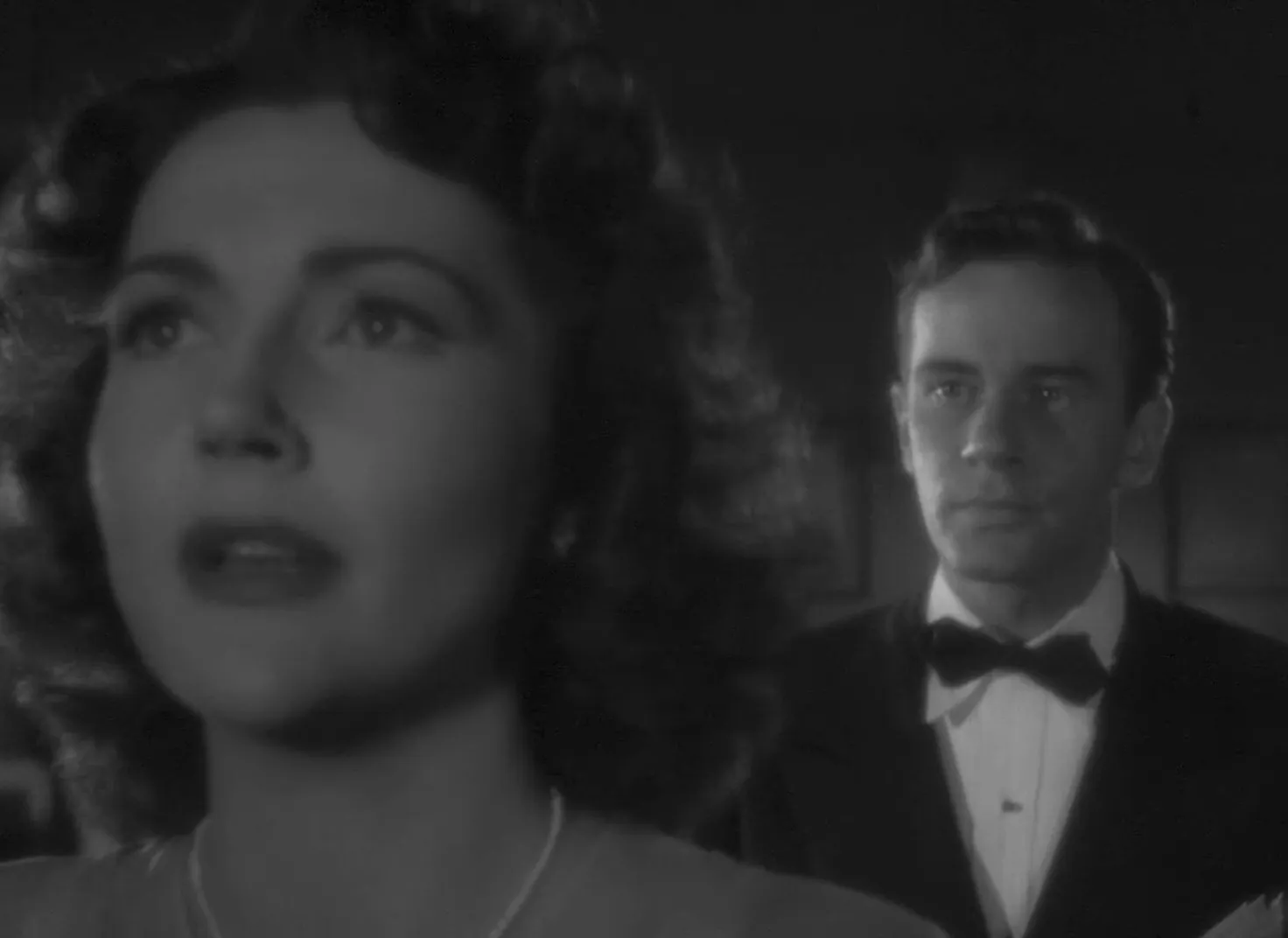
Detailed Synopsis: The Spiritualist Racket and the Return of a Husband
The film opens with two sisters—Christine Faber and Janet Burke—sharing domestic moments on a cliff-top beach house. Their banter carries both warmth and an undercurrent of unease. Christine is haunted by the death of her husband Paul, and the film quickly establishes the emotional stakes: she is not merely mourning, she is living within a recurring private theater of grief. Early lines from the script show the film's brittle mixture of intimacy and irony: "It was the wind," says one sister, while Christine insists, "But it sounded like Paul." That insistence propels the narrative.
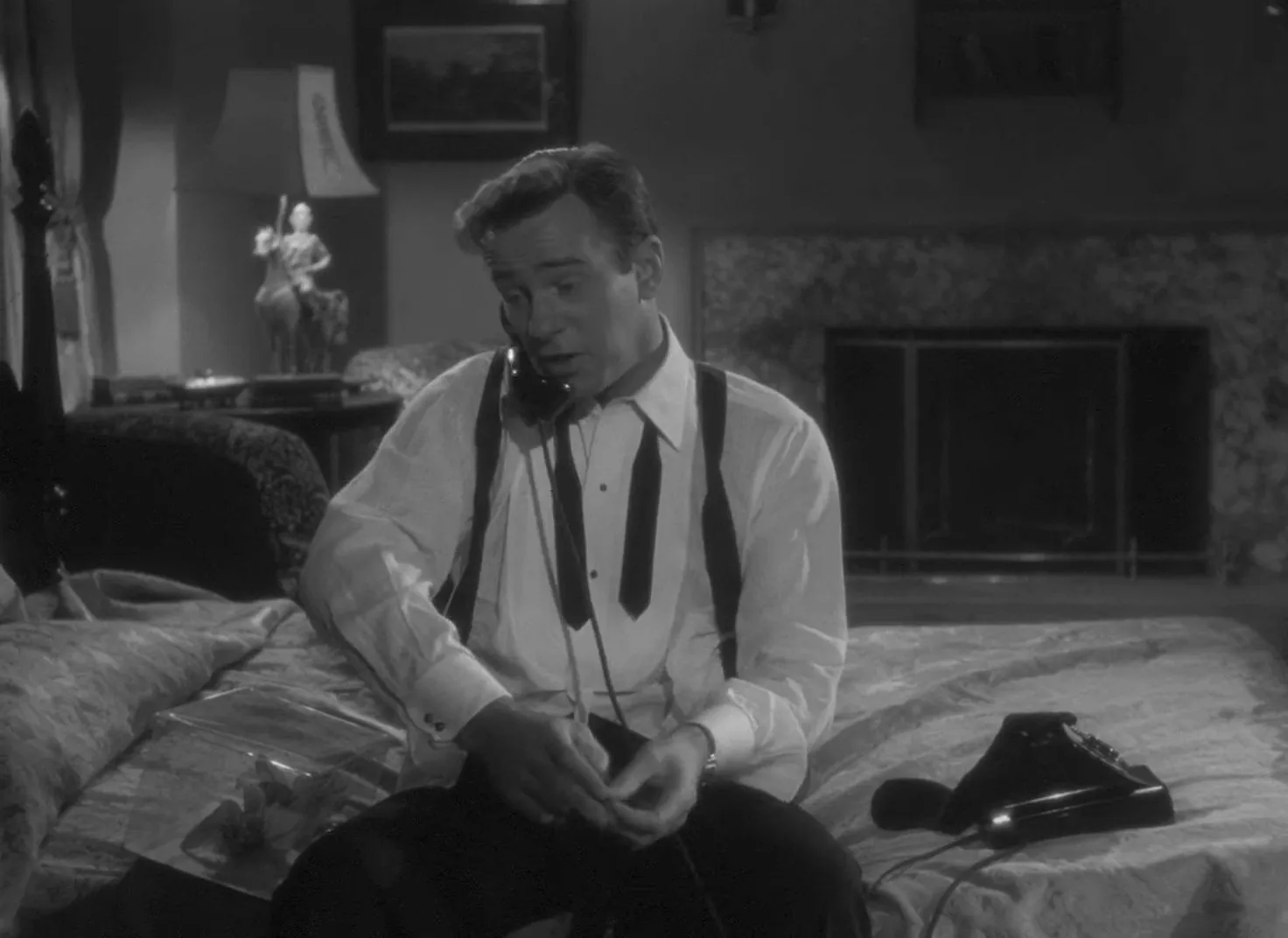
Into this emotional landscape comes Alexis, a "psychic consultant" who seems to know details of Christine's life that should be private. His house, visited by Christine, turns out to be a laboratory of effects and preparatory research: hidden phonographs, microphones, and mechanically produced phenomena. Alexis's methods are complex but ultimately theatrical: sound, suggestion, and careful prior investigation are orchestrated to stage the return of Christine's dead husband in ways that feel genuine to her.
The film develops with a familiar but effective noir tension. Martin Abbott, Christine’s practical suitor, concerns himself with facts and protection. Janet, younger and livelier, approaches joy more readily but is not immune to Alexis's attraction. Martin and Janet suspect fraud; they consult a detective to investigate Alexis's past and to secure forensic proof—fingerprints, records—that might expose him. The discovery of Alexis's criminal record complicates matters but does not immediately dislodge Christine's conviction that she is in contact with Paul.
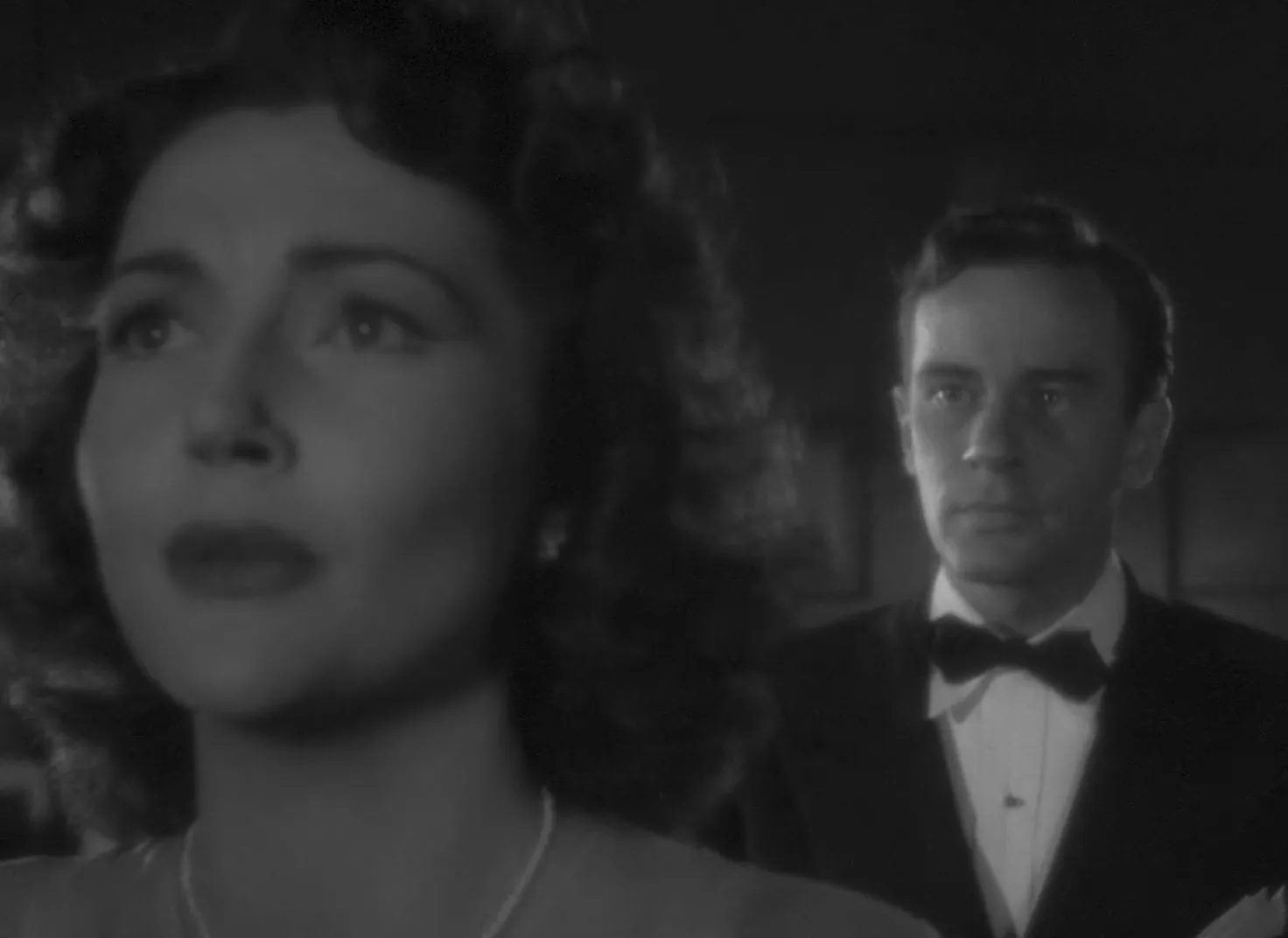
Gradually the narrative reveals a darker twist: Paul, the supposedly dead husband, is not dead at all. He had faked his death two years earlier and now returns with a plan to recover Christine's wealth by eliminating Alexis and reestablishing himself in Christine's life. Paul’s reappearance reframes Alexis's deceit: what had seemed like an elaborate con cooked up by Alexis now takes on new danger and urgency. The film's escalating stakes transform a story about illusion into a tale about homicidal greed and the vulnerability of women who inhabit a liminal space between mourning and the possibility of a new life.
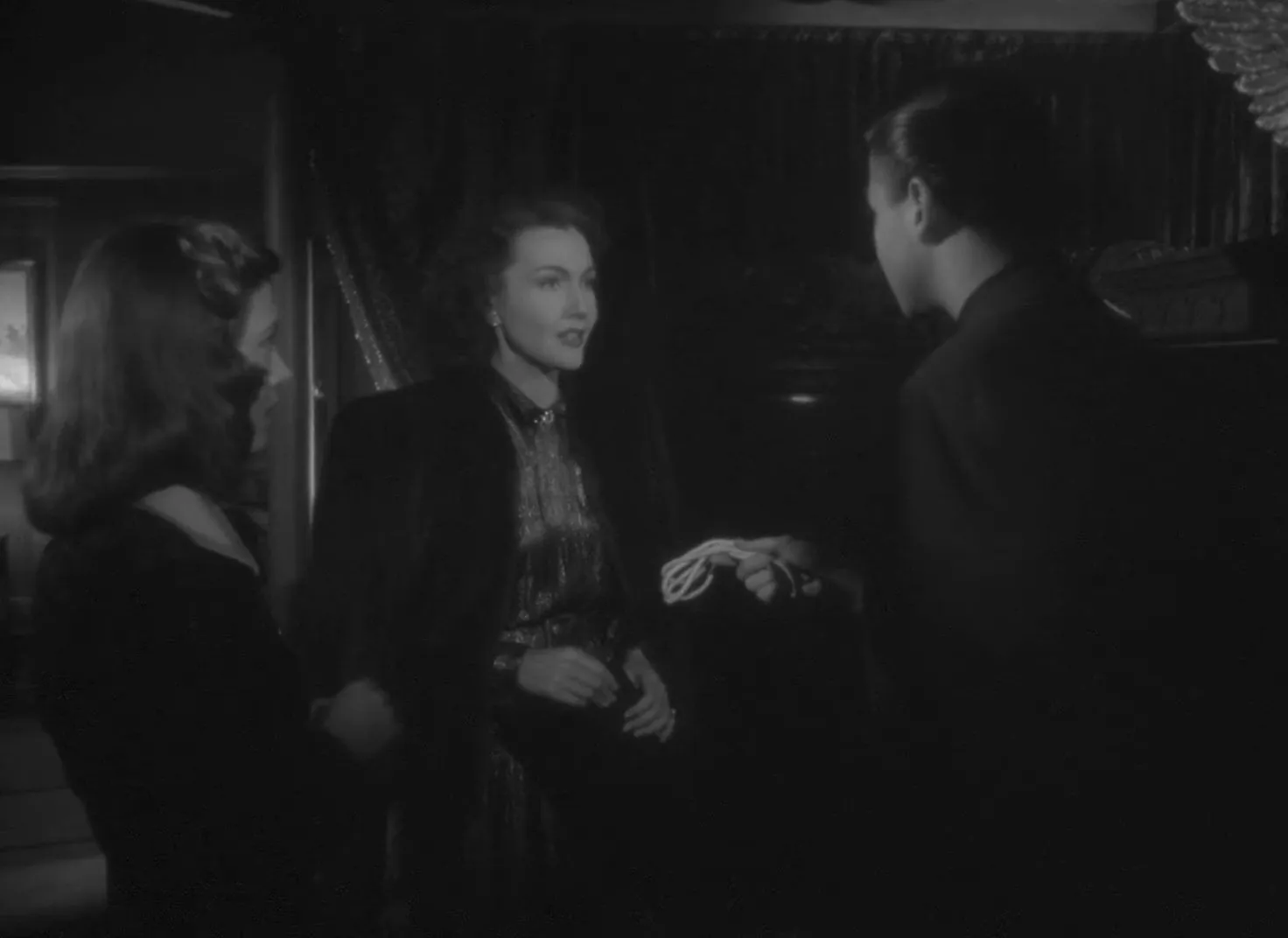
The climax occurs after a series of confrontations and a tightly staged séance. Alexis stages convincing manifestations; Martin and Janet investigate the house at night; Paul reveals his duplicity; and, in a violent resolution, Alexis is shot while protecting Janet and the police fatally confront Paul. The film closes on a melancholic note: the con artist who gave Christine comfort dies alongside the schemer who would have reclaimed his former life. The film thus resolves its plot with the blunt, fatal clarity typical of the film noir movie.
Principal Performances: Complexities Behind the Faces
The Amazing Mr. X features a small, well-chosen cast that does a great deal with a limited running time. The leading players are Turhan Bey as Alexis, Lynn Bari as Christine Faber, Cathy O'Donnell as Janet Burke, and Richard Carlson as Martin Abbott, with Donald Curtis as Paul Faber.
- Turhan Bey (Alexis): Bey's performance balances charm and technique. Alexis is a showman who understands theatricality; Bey imbues him with a charisma that makes the character both repellent and oddly sympathetic. The film asks the audience to hold these opposites simultaneously—Alexis as manipulator and as someone who nonetheless risks himself to protect Janet. That contradiction is the film's moral pivot.
- Lynn Bari (Christine): Bari portrays Christine's grief with a delicacy that avoids melodrama. Christine is haunted without being hysterical; her recurring experiences of Paul's voice are rendered as private terrors. Her quiet conviction—"It wasn't a nightmare, I tell you"—makes her the emotional center of the film noir movie.
- Cathy O'Donnell (Janet): As the younger sister, O'Donnell provides a counterpoint of vitality and curiosity. Janet is the character who sees the world most clearly; she moves between skepticism and attraction as Alexis's manipulations unfold. Her discovery of the con devices and her courage in confronting Paul define her arc.
- Richard Carlson (Martin): Carlson's Abbott is the practical suitor, an archetype in noir and melodrama. He is logical, protective, and occasionally brusque—qualities that create narrative friction but also provide moral ballast when irrational forces take hold.
The performances are economical and focused, suited to the film noir movie's emphasis on mood and suggestion over expansive, realist psychology. The actors' restraint allows Alton's camerawork to assume narrative prominence, which brings us to the film's most distinctive element.
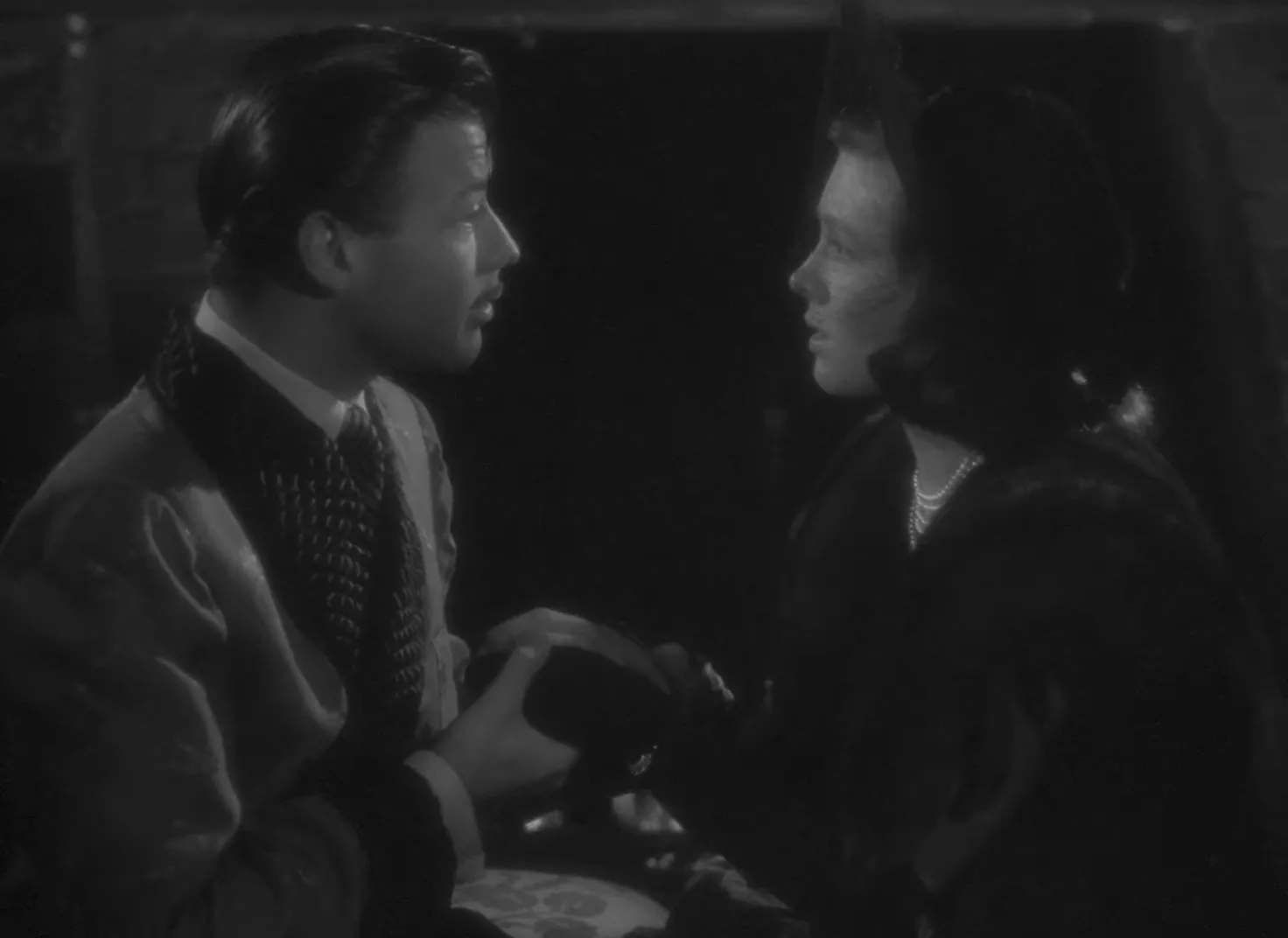
Cinematography and Style: John Alton’s Visual Mastery in a Film Noir Movie
John Alton’s involvement is central to any discussion of The Amazing Mr. X as a film noir movie. Alton's approach to lighting—contrasts shaped as much by darkness as by light—renders interiors as uneasy spaces. A corner of a room might be full dark, a doorway a pierced shaft of light. The effect is psychological: shadows suggest secrets; light reveals selective elements, focusing the spectator's attention with a knife-edge of intensity.
Alton’s trademark techniques are on display in key scenes. The séance sequence, for example, is not simply an exercise in special effects. Alton composes frames so the dark becomes an actor—an anonymous presence that bridges the physical world and the spiritualist illusions being staged. The small house by the sea, often ripped by wind and fog, is rendered as a landscape interiorized: the outside weather intrudes as an atmospheric correlative to Christine’s agitation.
Alton’s influence extends to camera placement and the use of off-screen sound. Sound design and musical choices (notably the use of Chopin's Fourth Prelude) are worked into his visual scheme so that a single motif—music, a photograph, a tide-lapped cliff—reverberates across multiple shots. The camera often frames characters at the edge of darkness, which aligns spectators with the film's central uncertainties: what is shown is never the whole truth, and the unseen often matters more than the seen.
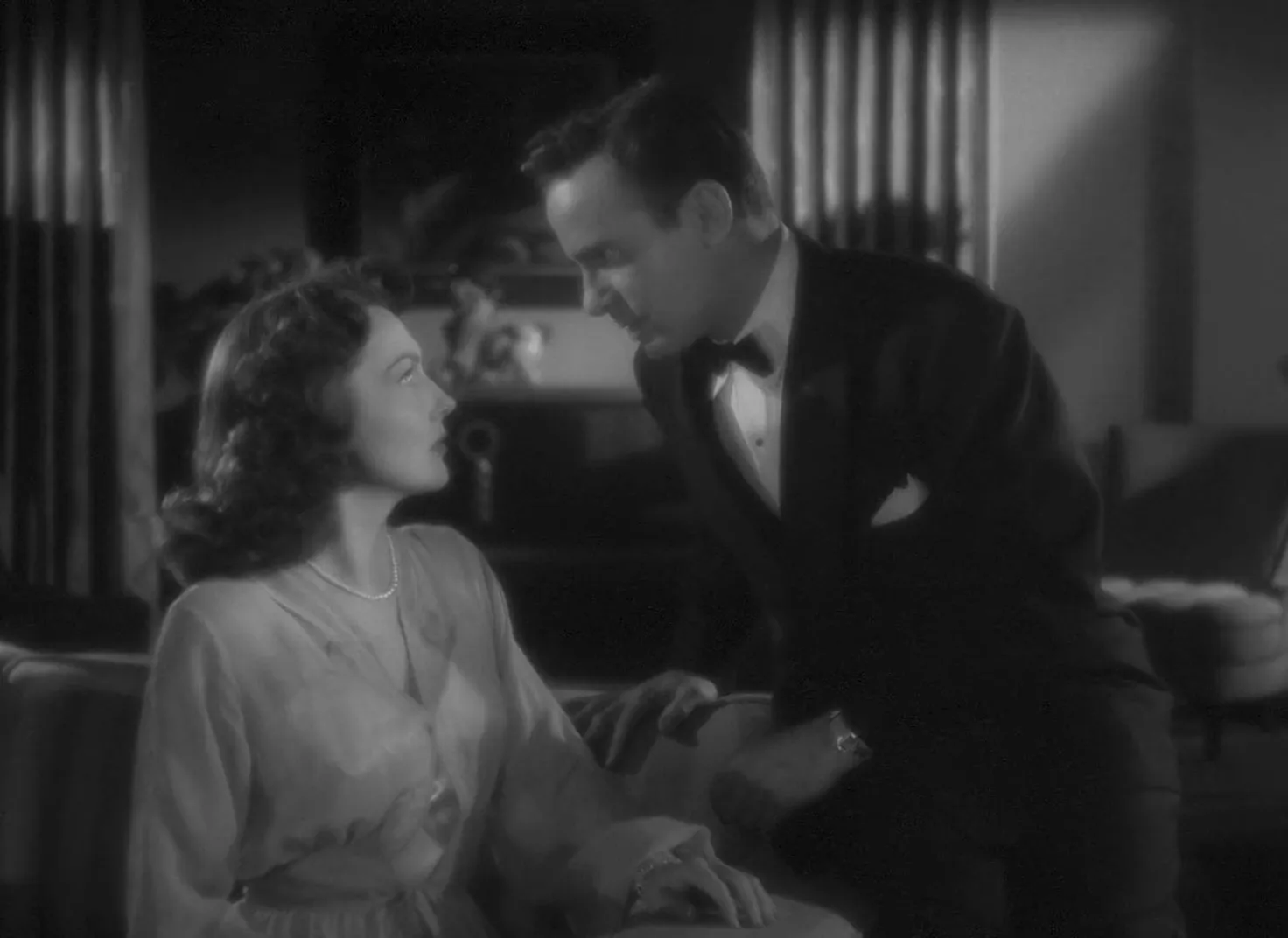
Alton’s Lighting as Moral and Emotional Commentary
In the film noir movie idiom, light functions as judgment and sanctuary. Alton's chiaroscuro makes moral ambiguity visible; the characters inhabit a world where ethical clarity is hard to achieve and where visual clarity mirrors emotional confusion. The camera's refusal to illuminate everything mirrors Christine's own partial knowledge: she senses Paul's presence but cannot name its mechanisms, and Alton's frames replicate that epistemic blindness for the viewer.
Themes: Grief, Deception, and the Ethics of Comfort in a Film Noir Movie
Two themes dominate the film: grief as a form of theatricality and the ethics of deception. Christine's longing for Paul has the structure of a ritual: sounds that recall him, objects that replace him, and the recurring sense of being addressed by a voice over the ocean. Alexis supplies a compassionate performance—one that is staged, researched, and paid for. The film probes what it means to be consoled by a lie. Is the deception excusable if it alleviates suffering? The screenplay refuses easy answers.
At the same time, Paul’s return complicates the moral landscape. He is a direct threat—duplicity gives way to murderous greed—and the consequences are fatal. Alexis, who is a professional deceiver, sacrifices himself to save Janet, which forces the film to complicate the usual moral binaries of con artist versus victim. The sympathetic con man who protects the vulnerable emerges as a noir archetype: a morally compromised figure whose sacrifice offers a final, ambiguous redemption.
"I've always loved you. You know that."
The line above—delivered with aching sincerity—captures the film's refusal to separate feeling from manipulation. The declaration could be love, coercion, or both. In the film noir movie tradition, speech acts are often double-edged: vows mean more than the speaker intends, and confessions reveal as much about the listener's needs as the speaker's honesty.
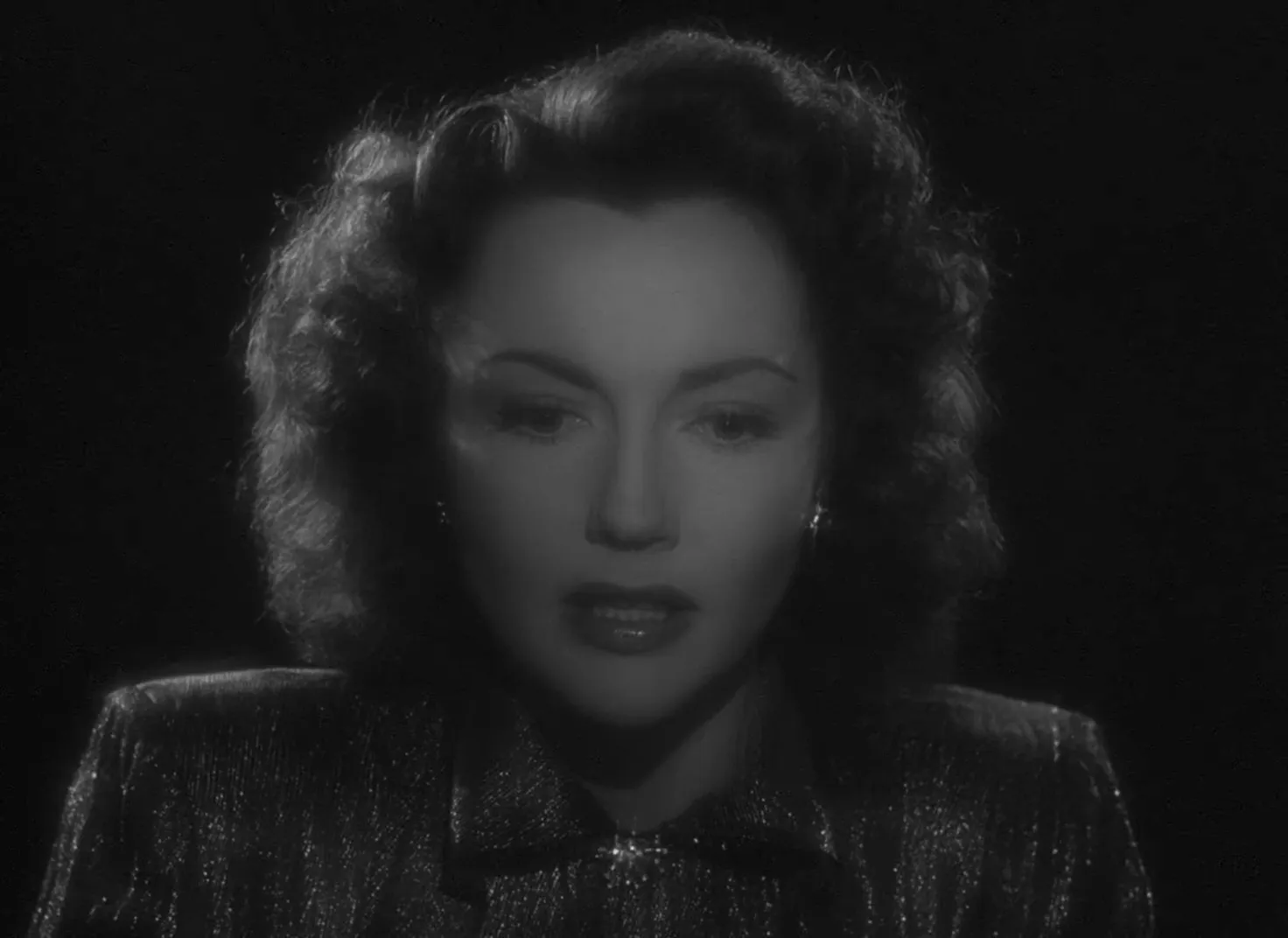
Key Sequences and Technical Notes
Certain sequences in The Amazing Mr. X are indispensable to any analysis of the film as a film noir movie. These sequences illustrate how the film composes suspense and how production craft underwrites narrative meaning.
- The beach-call sequence (early beach scene): The film establishes its mood in the opening beach encounter, where Christine hears a voice over the ocean. This motif—sea, foghorns, and wind—fuses natural soundscape and private hallucination. The scene demonstrates the film noir movie's use of environment as psychological stimulus.
- The phonograph motif (interior scene): The unexpected playing of Chopin’s prelude becomes a cue for Christine’s memories. The use of a single piece of music as an emotional anchor is typical of tightly focused noir dramas.
- The séance (mid-film): Alexis stages an impressive séance that convinces Christine and Janet while attracting skeptical attention from Martin and a detective. The sequence is a tour-de-force of staging, light, and sound; it demonstrates the film’s central tension between performance and reality.
- Discovery and reveal (late mid-film): Janet discovers the hidden devices and recordings that fabricate Paul’s interventions. The reverse-shot editing and the use of darkness to conceal technical apparatus make the reveal both plausible and efficient.
- The climax (violent resolution): The final shootout on the property resolves the film’s ethical questions through irrevocable action. Death is the ultimate punctuation; in a film noir movie, it is often the only conclusive verdict.
Production History and Context
Production details help explain the film's economy and creative choices. The Amazing Mr. X was produced by Ben Stoloff Productions, with Benjamin Stoloff as producer, and released by Eagle-Lion Films in 1948. The screenplay credits include Crane Wilbur, Muriel Roy Bolton, and Ian McLellan Hunter. The cast included Turhan Bey, Lynn Bari, Cathy O'Donnell, and Richard Carlson. Filming began on 5 January 1948 and, according to accounts, moved at a brisk pace—Vorhaus reported a three-week shoot.
At various stages the film carried other working titles, including The Spiritualist and The Mystic. The picture was tailored as a vehicle for Turhan Bey, who at the time was under contract. Vorhaus later requested a rewrite; Ian McLellan Hunter reportedly completed a fast rewrite that resulted in the shooting script. These production facts help explain the film’s compact narrative and its reliance on atmospheric technique rather than expensive set pieces.
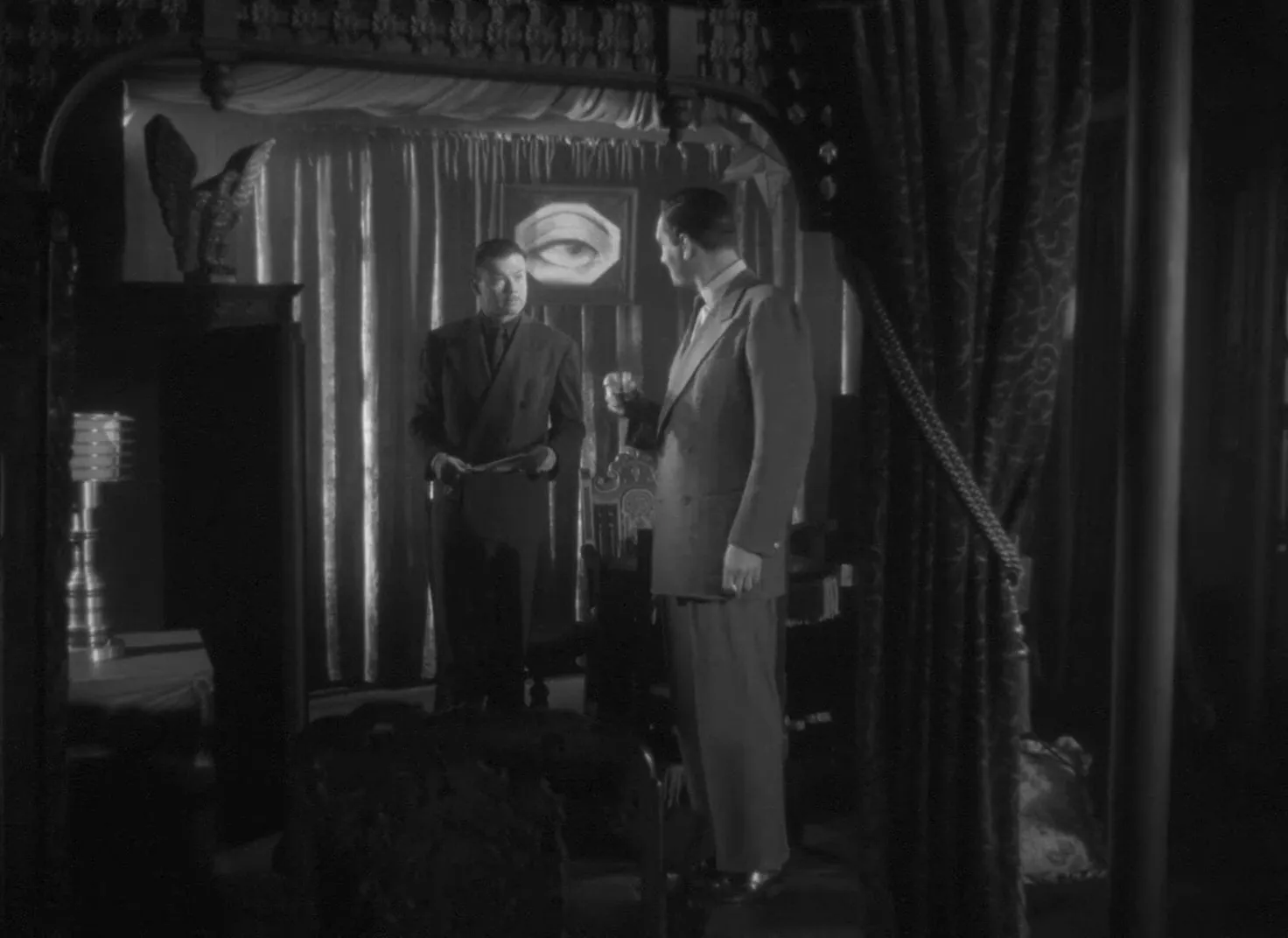
Studio Dynamics and the Film Noir Movie as Economical Art
Eagle-Lion Films is an emblematic distributor for a film noir movie of modest budget but strong stylistic ambition. The company specialized in economical productions, and The Amazing Mr. X matches that constraint with an emphasis on character, mood, and a limited set of locations. The result is an efficient, psychologically concentrated film where craft matters more than scale.
Reception, Legacy, and the Public Domain
The Amazing Mr. X had mixed responses at preview screenings, which sometimes resulted in unintended laughter. Nevertheless, the film has been kept alive in retrospectives and classic-film programming. One of the film’s enduring claims to attention is John Alton’s cinematography; the film is referenced in Painting with Light and remains an instructive object for cinematographers and students of film noir movie aesthetics.
Another factor in the film’s legacy is its status in the public domain, which has allowed the movie to circulate widely without legal barriers. That availability has contributed to the film's survival in classic-cinema discussions and to scholarship that emphasizes Alton’s visual contributions.
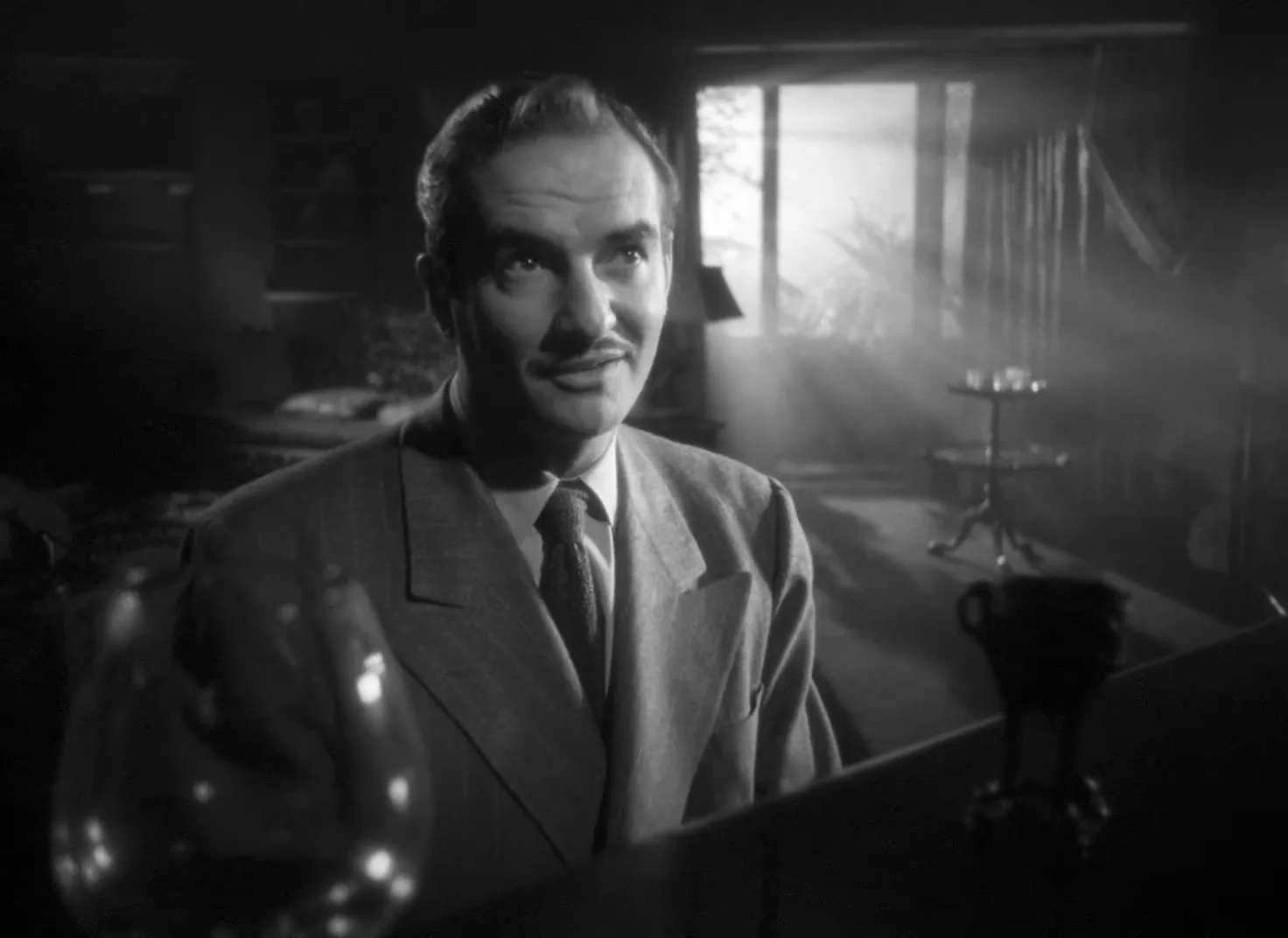
Why The Amazing Mr. X Matters as a Film Noir Movie
The Amazing Mr. X matters for several intersecting reasons. First, it is a compact example of a film noir movie that merges psychological suspense with moral ambiguity. Second, it features an early, striking demonstration of John Alton's stylistic vocabulary—lighting that does more than show; it speaks. Third, the film sits at an intersection of genres: thriller, horror, and noir, which gives it an atypical but rewarding hybrid quality.
As a film noir movie, The Amazing Mr. X embodies the genre’s interest in compromised figures and moral complexity. Alexis is a performer whose moral calculus is tangled; Paul is a scheming villain who refuses to remain dead; Christine is a woman suspended between memory and the prospect of a future; and Janet is the younger figure whose curiosity and urgency cut through the fog of grief. The film stages their interactions in a world where vision is compromised by shadow—both literal and ethical. That is the essence of noir.
Three Reasons to Study The Amazing Mr. X
- John Alton’s cinematography offers an illustrative lesson in how lighting can carry narrative meaning in a film noir movie.
- The film’s compact narrative demonstrates how moral ambiguity can be dramatized within a modest budget and a brief running time.
- The hybrid genre elements—spiritualist trickery, psychological suspense, and noir fatalism—make the film a useful case study in how mid-century American cinema managed crossover storytelling.
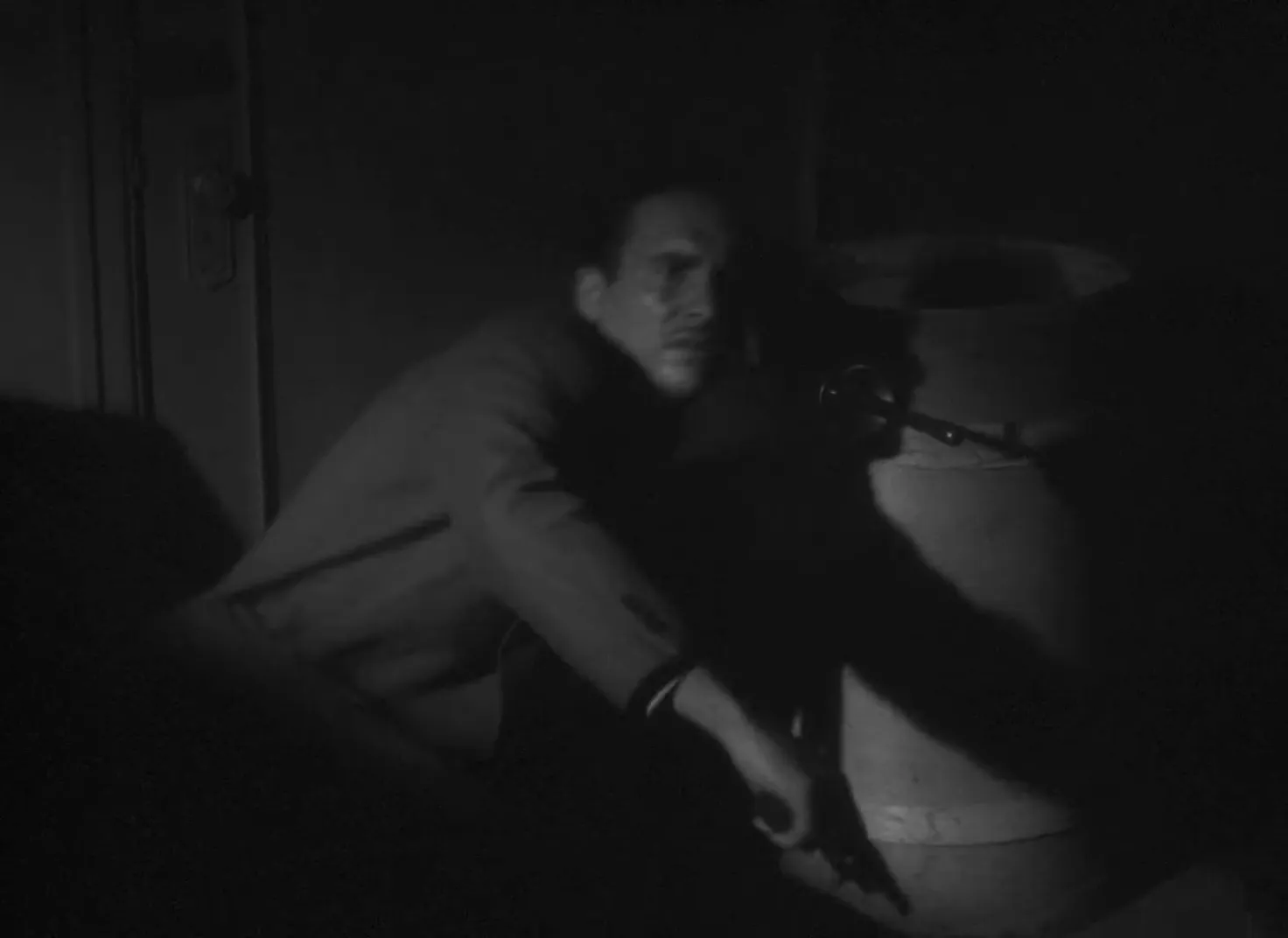
Critical Observations and Interpretive Notes
Close attention to the film reveals recurring motifs that anchor the narrative psychologically. Sound is one such motif: Chopin’s Fourth Prelude recurs as a memory trigger, and recorded voices substitute for the authentic presence of a loved one. Objects perform similar work—withered flowers, a misplaced wedding dress, and portrait substitutions function like stage props in Christine’s private theater. The film thus stages the tragedy of mistaking performance for presence.
Another observation concerns the film noir movie's double exposure of performance: Alexis, as a professional performer, understands how to discipline belief. Paul, by contrast, manipulates physical reality—his faked death and return—suggesting that performance and practical deception are two sides of the same coin. The film’s fatal outcome insists that neither strategy can produce a sustainable, ethical life.
"Since I'm believed dead, I could even kill a man. Nobody think of looking for me."
The line above—spoken by a character who has fabricated his own death—captures noir’s fascination with identities that are mutable and perilous. The film thus participates in a larger cultural concern of the era: how postwar dislocations produced moral and social anxieties that cinema dramatized through masked figures and fatal consequences.
Technical Craft: Editing, Sound, and Mise-en-Scène in a Film Noir Movie
The Amazing Mr. X’s editing is purposeful and unobtrusive. It favors continuity-based cuts that preserve spatial logic but occasionally inserts accelerated rhythms during moments of discovery, such as Janet's infiltration of Alexis's hidden spaces. The sound design—phonographs, off-screen voices, the sea—operates with Hitchcockian precision, using audio to direct attention where visual confirmation is temporarily absent.
Mise-en-scène is compact and intentional. Interiors are furnished to function as both domestic space and stage set; props are doubled as evidentiary devices and emotional triggers. The house itself is a character: its drawers and cabinets hide mechanisms, and its windows and doors mediate between interior illusion and exterior reality. The film noir movie interest in claustrophobic spaces finds an especially apt expression here: a house by the sea becomes a site of both sanctuary and entrapment.
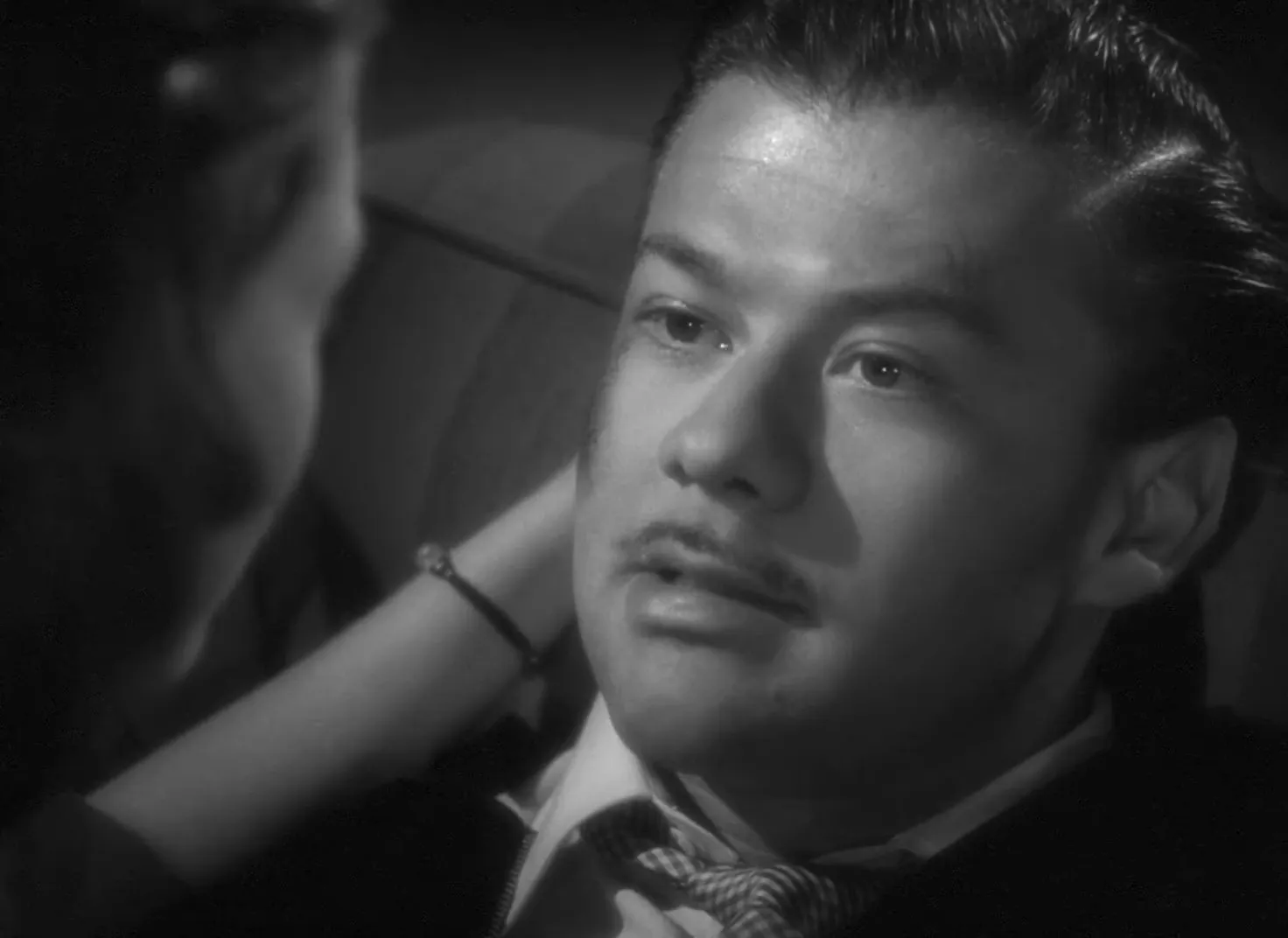
Conclusion: The Enduring Value of The Amazing Mr. X in the Film Noir Movie Canon
The Amazing Mr. X offers a disciplined, thematically dense experience that rewards attention. As a film noir movie, it is less famous than many canonical titles but retains the ingredients that define the genre: ambivalent morality, atmospheric cinematography, and a concluding sequence where violence and revelation coincide. John Alton’s lighting design and Bernard Vorhaus’s direction make the film an economical demonstration of how technical skill can amplify narrative compactness.
For the serious student and discerning viewer of classic cinema, The Amazing Mr. X is worth revisiting. It functions as a case study in how grief can be commodified, how performance can substitute for truth, and how the aesthetics of noir—chiaroscuro, sound motifs, and tight mise-en-scène—can render a modest thriller into a memorable cinematic experience.
Final Recommendations
- Watch for the visual economy: study how Alton uses contrast to reveal and conceal psychological information in the film noir movie.
- Pay close attention to the phonograph and musical motifs; they are narratively significant and reveal character priorities.
- Consider Alexis as a morally ambiguous figure; his actions complicate the simple binary of con artist versus victim.
- Use the film as a classroom text on the intersection between performance, deception, and cinematic style in the film noir movie tradition.
Those who appreciate the film noir movie should approach The Amazing Mr. X as a rewarding study in craft. It is compact, artfully photographed, and narratively taut. For students of classic cinema and for fans looking to deepen their understanding of noir aesthetics, this film provides a precise and vivid example where technique and theme converge.
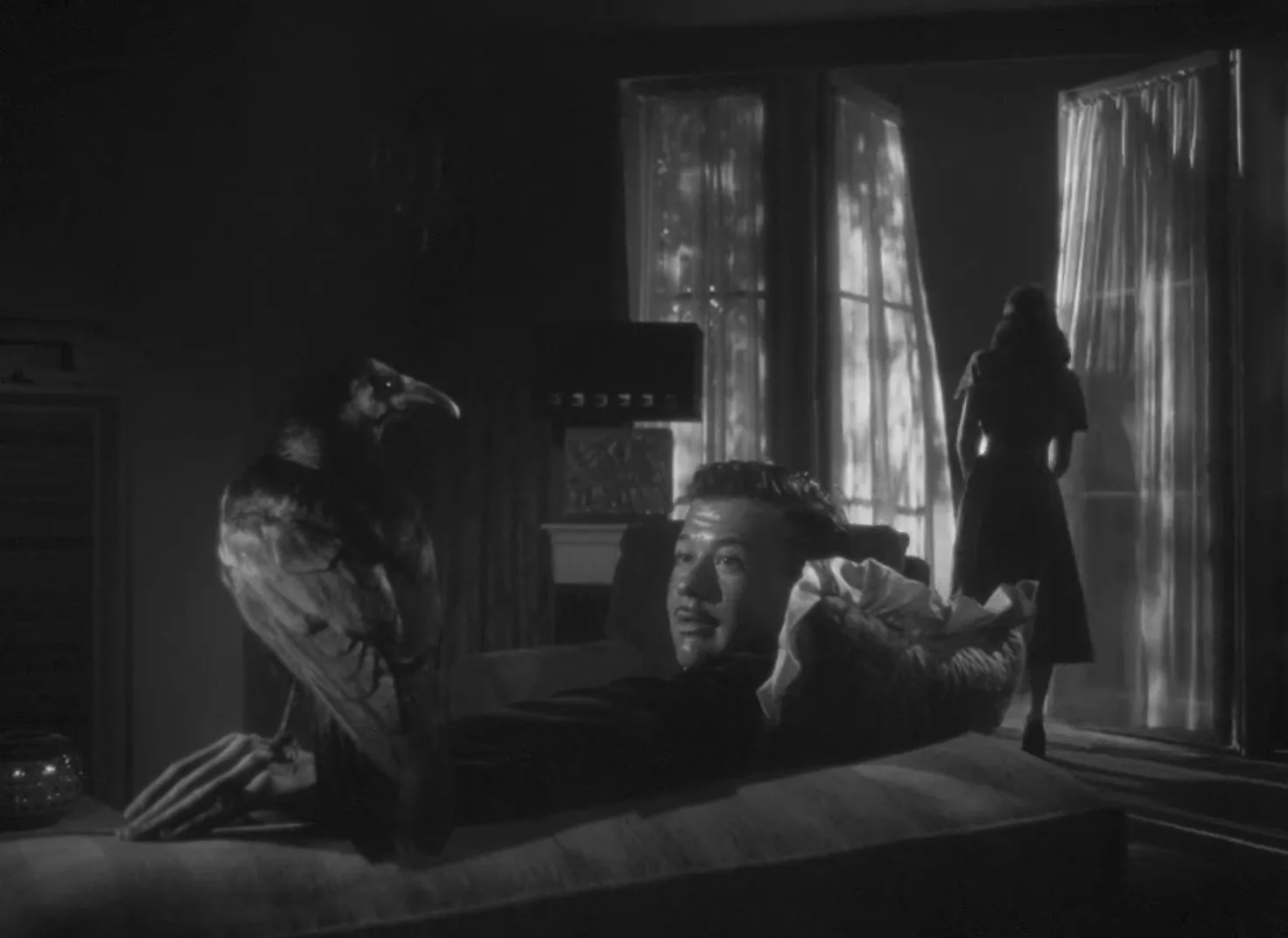
Credits and Principal Personnel
- Director: Bernard Vorhaus
- Cinematography: John Alton
- Writers: Crane Wilbur, Muriel Roy Bolton, Ian McLellan Hunter
- Producer: Benjamin Stoloff
- Starring: Turhan Bey, Lynn Bari, Cathy O'Donnell, Richard Carlson
- Distributor: Eagle-Lion Films
- Runtime: 78 minutes
- Release Year: 1948
For readers interested in classic film scholarship, The Amazing Mr. X is an accessible exemplar of the film noir movie’s ability to fuse genre elements with psychological insight. Whether the interest is historical, stylistic, or moral, this film rewards a careful viewing and offers a clear pathway into the crafts of mid-century American filmmaking.
